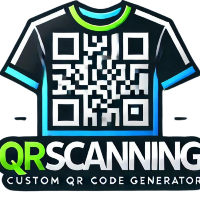
Learn how printing QR codes on products can transform your business operations, enhance customer engagement, and improve data collection strategies. Whether you own a small boutique or a large enterprise, integrating QR codes into your products can open up new avenues for marketing and customer interaction.
Why Use QR Codes on Products?
QR codes bridge the gap between physical and digital worlds. They allow consumers to access detailed product information, check authenticity, or even enjoy augmented reality experiences with a simple scan. For businesses, QR codes can streamline operations, track consumer behavior, and enhance loyalty programs.
Benefits of Printing QR Codes on Products
- Enhanced Customer Engagement: QR codes enable customers to quickly access information about products, lead them to promotional offers, or drive them to a specific landing page.
- Space Efficiency: QR codes are compact and can store significant amounts of data, reducing the need for excessive packaging information or printing.
- Cost-Effective Marketing: QR codes are an affordable way to provide dynamic content and promotions without additional printing costs for each campaign.
- Tracking and Analytics: By linking QR codes to specific URLs, businesses can gather data on customer preferences, scan rates, and geographical data for further optimization of marketing strategies.
Steps to Print QR Codes on Products
Step 1: Design Your QR Code
Start by designing a QR code that aligns with your brand. Many online tools offer free QR code creation. Ensure that your QR code directs to mobile-friendly content relevant to your product.
Step 2: Test the QR Code
Before printing, test your QR code extensively across various devices. Ensure it links correctly and quickly loads the intended content.
Step 3: Choose the Right Printing Method
The choice of printing method can vary based on the product material:
-
Labels: Use high-quality adhesive labels for products like bottles, electronics, or packaged goods.
-
Direct Printing: For apparel or durable goods, consider direct printing methods such as pad printing or screen printing.
Step 4: Consider Scaling
Ensure that the QR code is appropriately scaled. A too-small code might be hard to scan; experts suggest at least 2 x 2 cm.
Step 5: Select the Best Location
Position your QR code in a spot that is easily noticeable and accessible for scanning. Front packaging or tags are common choices.
Optimizing for Local Search
Enhance your QR code strategies for local optimization by associating them with location-based offers. Leverage local business directories and link QR codes to their profiles or special local events.
Having a local SEO strategy can increase visibility for businesses looking to capitalize on nearby consumers. Incorporate geo-targeted keywords into your digital content that is linked to via QR codes.
Get Started with QR Codes Today!
Printing QR codes on products offers a plethora of advantages, from increasing customer interaction to boosting marketing effectiveness. Whether you’re a start-up or an established enterprise, adapting this technology can elevate how you engage with your customers.
For businesses eager to explore the potential of QR codes, starting this journey is just a step away. Get free quotes and advice tailored to your business needs by contacting QR scanning experts today. Implement QR codes in your strategy and enhance your business’s connection to customers across various platforms.
Let QR codes pave the way for a digital transformation in how your business interacts with consumers. Start using QR codes for your business today!
📞 Call Us: (833) 723-2800
✉️ Email: customercare@qrscanning.com
🌐 Visit Us: www.qrscanning.com

